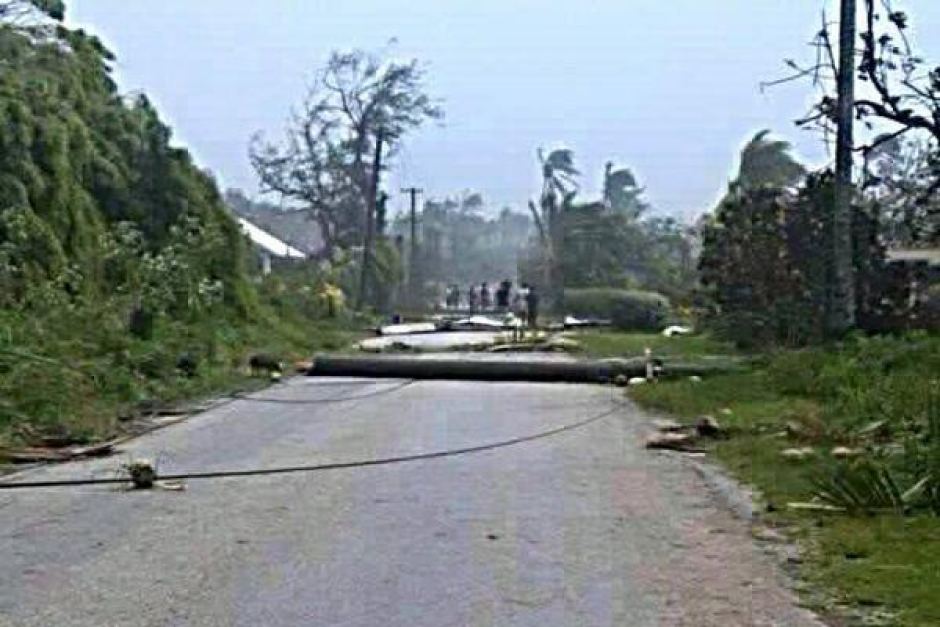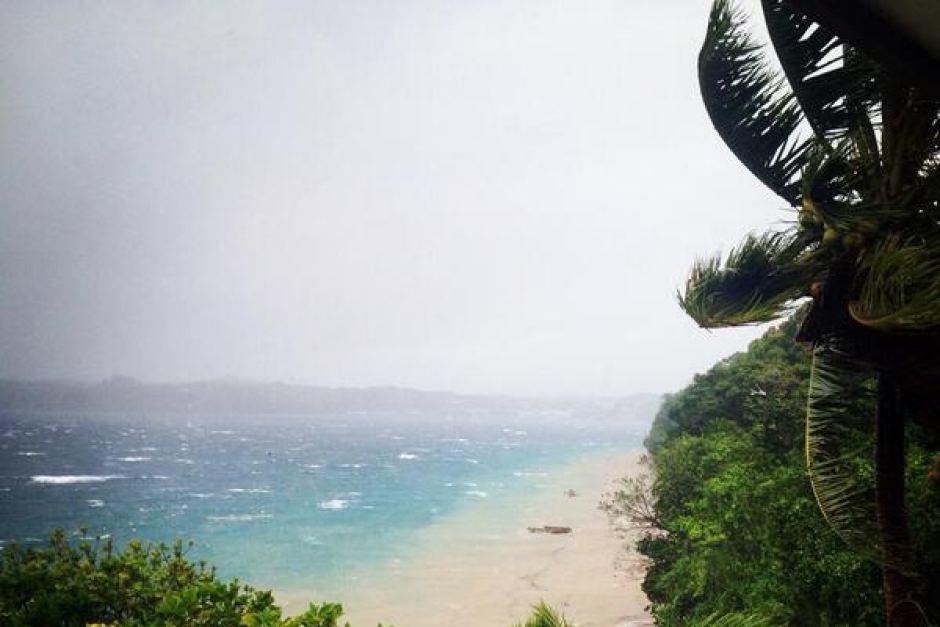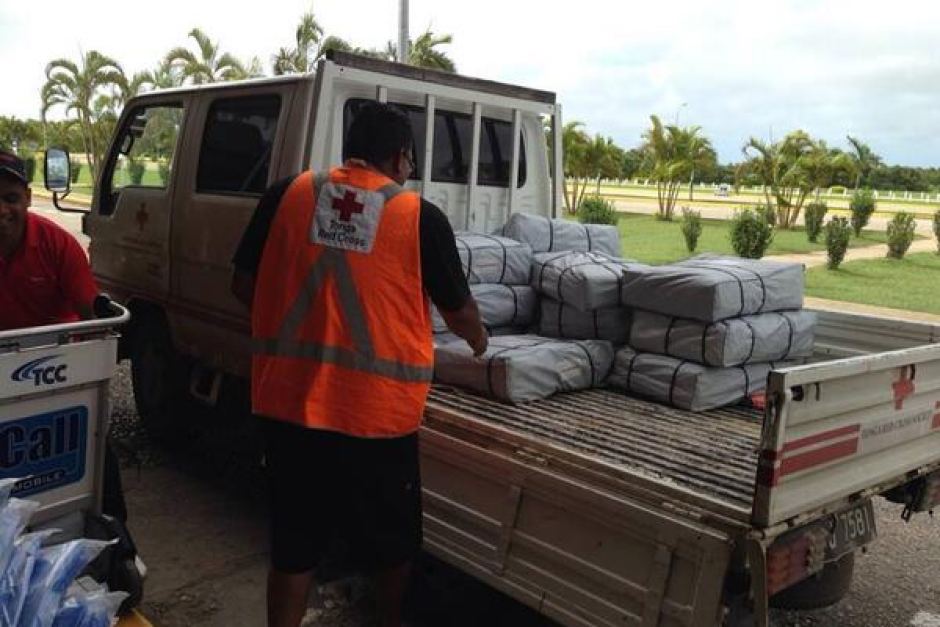
The full extent of damage is still unclear as the storm, now downgraded to category three, moves away from Tonga and out into the open ocean.
The huge storm, described as the worst to hit Tonga in decades, slammed into the northern islands on Saturday before moving on to the main island overnight.
Houses have been flattened, roofs blown away and trees and power lines brought down.
The Governor of Ha'apai, Tu'i Ha'angana, has visited the area and says the damage is so bad, he can see from one side of the island to the other.
Ha'apai is home to about 8,000 people and is popular with tourists.
Tonga's director of emergencies, Leveni Aho, has told the ABC he has serious concerns for those islands in Ha'apai where communications have been cut.
"The picture comes to hand now, it was really bad," he said.
"I think it was 70 per cent of the housing of the two islands that we have access to now have been affected - destroyed or partially damaged.
"We have got some people sheltered in some of the evacuation centres, buildings and some of the churches."
Mr Aho says there is still no communication with 80 per cent of the Ha'apai group of islands, including the main island Lifuka which bore the brunt of the storm.
Residents there were reported to have huddled in churches for shelter as houses were destroyed in the cyclone.
Ian Wilson, a New Zealand emergency management official, said Lifuka was in Ian's direct path.
"Whatever was on the island has been damaged, whether it's buildings, crops, roads or infrastructure, it's all been damaged," he said, warning that it remained difficult to get a detailed picture of the destruction.
"There is no communication, we did have a satellite phone but that also died.
"It is serious, the eye of the storm went right across the top of the island."
A New Zealand Air Force plane has made an aerial assessment of the damage and two Tongan navy boats are on their way to Ha'apai to assess the damage.
DFAT confirms Australians safe
In Canberra, the Department of Foreign Affairs says it has confirmed with Tongan authorities that a group of Australians in Ha'apai is safe and well.
In Tonga's capital Nuku'alofa, residents hunkered down overnight as Ian passed, generating winds at the centre of the storm up to 200 kilometres per hour.
The most recent satellite images show Ian tracking south-southeast away from the the Tongatapu island group, where the capital is located.
The worst effects of Ian were expected to be felt across the capital between midnight and 3am Sunday local time.
As it passed Nuku'alofa, at its centre the storm was packing winds of about 200 kilometres per hour, gusting up to 290 kilometres per hour.
Relief effort begins
The Red Cross Society's Secretary General, Sione Taumoefolau has told Radio Australia more than 3,000 people were evacuated as a result of the cyclone.
He says a lot of damage has been caused to infrastructure on Ha'apai.
Sione Taumoefolau says his team will provide supplies such as tarpaulins and blankets.
The United Nations says it is working with disaster officials in Tonga to help coordinate the relief effort for islands affected by Cyclone Ian.
Sune Gudnitz from the Pacific office of the UN Office for the Coordination of Humanitarian Affairs based in Suva has told Radio Australia a team member is expected to arrive in Ha'apai on Monday.
"Logistically in the Pacific, by nature as you are aware it is always a challenge to get around, but I think we are fortunate in this sense that the airport, the main airstrip in Ha'apai has only minimal damage, so it is possible to land in a plane which is always a good start," he said.
"The moment we have any clarity on the need from the ground, we can mobilise through the Pacific Humanitarian team, sectorial expertise to go in and support the government in providing shelter, working with partners on the ground."





Reader Comments
to our Newsletter